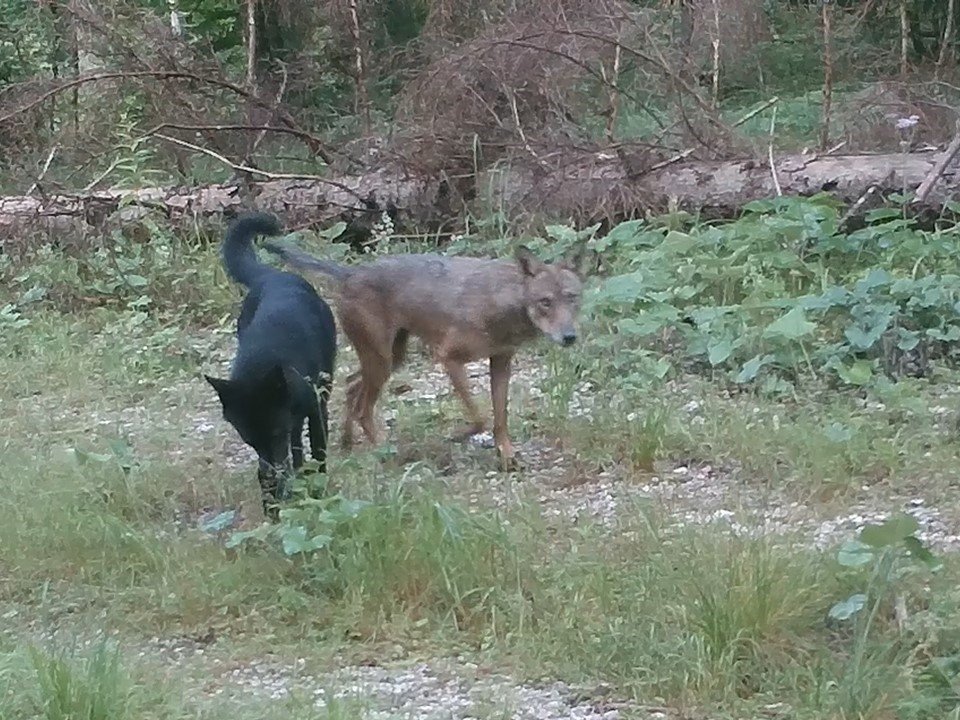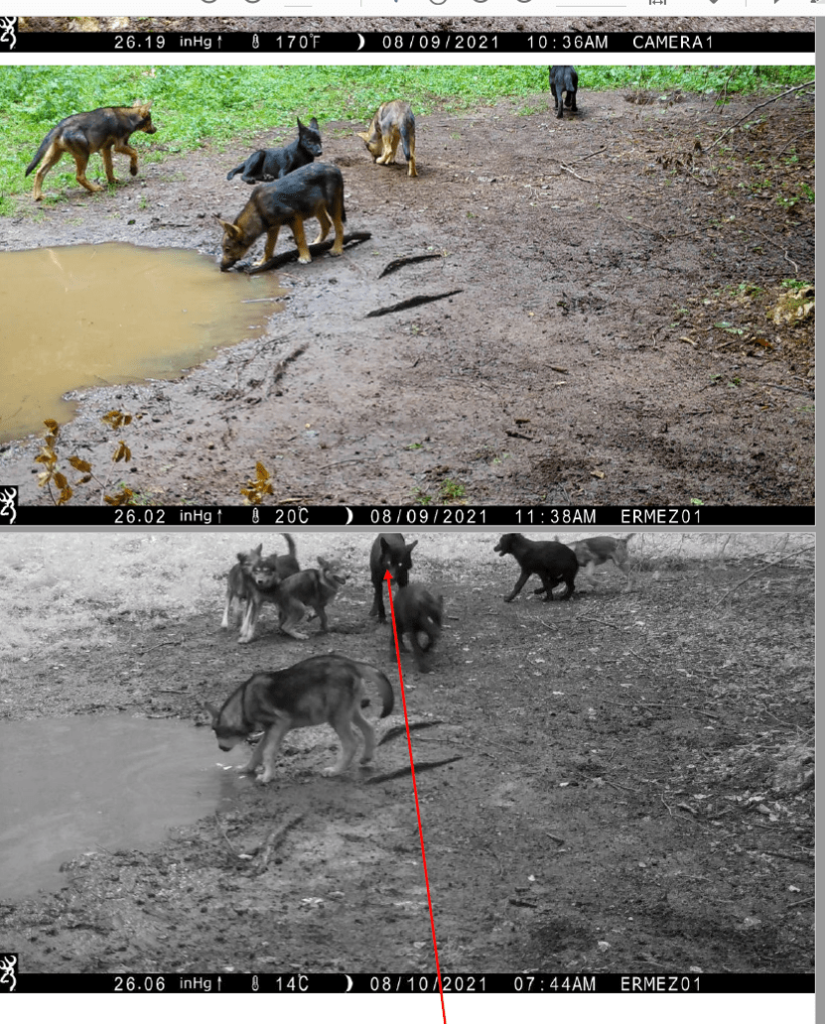Wolves in Gorenjska
Wolves are naturally returning to the areas they once inhabited. In the Gorenjska region, the first wolf (a disperser from the Slavnik pack) appeared in 2012 on the Grajšca Mountain after a long absence. Individual signs of wolf presence were recorded in this area in 2013 and 2014. Thereafter, no wolves were detected in the area for several years. In 2019, we detected based on samples collected in the Jelovica, Pokljuka and Cerkljansko areas three male-female pairs, and in the summer months we also officially confirmed the presence of pups in the above-mentioned areas for the first time.
The occurrence of hybrids
Last year (2021), an all-black male, a hybrid between a wolf and a domestic dog, appeared in the border area between Slovenia and Italy (area between Trbiž, Predel, Log pod Mangartom). According to the Italian experts in large carnivore research – Progetto Lince Italia – this male joined a female wolf living in the area. The pair has been filmed together several times in the last year. All the data indicate that the female and the black hybrid have formed a pack which currently numbers 9 animals (alpha female, alpha male hybrid and 7 hybrid cubs).

The pack covers the territory in Italy between Trbiž and Lake Rabelais, part of the territory is also in Slovenia (Predel, Log pod Mangartom and the wider Kranjska Gora area). As most of the pack’s territory lies on the Italian side, good information on what is happening is available mainly from our Italian colleagues, with whom we are in constant contact at the Slovenian Forest Service. We exchange information on damage, trends and measures. It is the photographic material received from the Italian experts that has confirmed our assumption that the wolf and the black hybrid had a litter of pups last year and formed a pack. Several photographs taken near the Slovenian-Italian border show a black male and seven pups with different skin colors (from completely black and darker colored to pups with an almost completely wolf-like appearance).

The introduction of dog genes poses a major threat to the wolf population, as the introduction of dog genes can transmit to the wolf population traits of dogs that are undesirable in wolves. The consequences of introducing dog genes into the wolf population are unpredictable. Genetic contamination would jeopardize millennia of natural selection that has genetically refined wolves to be as adapted as possible to the environment in which they live.
The incorporation of dog genes into wolf populations is becoming a major conservation problem in many places. The problem has only started to be tackled in our country in recent years, but in neighboring Italy, large LIFE projects (e.g. IBRIWOLF, MIRCO-lupo) have been dealing with the problem for a long time.
In order to prevent the further spread of dog genes into the wolf population, the Ministry of Environment and Spatial Planning of the Republic of Slovenia has issued a permit for the removal from the wolves by culling of nine individuals: one female wolf and eight wolf-dog hybrids (alpha male and 7 pups). The permit for the removal from the wild by shooting will be valid until the end of 2022.
The removal from the wild by culling will not be detrimental to the favorable status of the wolf population in Slovenia. On the contrary, the non-removal of hybrids from the wild would pose a serious threat to the favorable status of the wolf population, as this could cause irreparable damage to the wolf population in Slovenia.
In Italy the law does not allow these animals to be removed by culling. There the strategy is to neutralize them reproductively. The efforts are aimed to capture the animals, preform a vasectomy or sterilization and release back to nature. Certainly, a more difficult way to solve the problem, but the commitment is maximum.
The cross-border collaboration between institutions and researchers is excellent and constant, for the best possible solution of hybridization problems in both countries.